
If you’re looking to escape the hustle and bustle of city life, Southern New York offers some hidden gems that provide the perfect retreat. Over the years, I’ve explored many quiet corners of this region, and I’ve fallen in love with its tranquil towns nestled in nature.
From woodland retreats to riverside villages, these secluded spots offer serenity and a close connection to the great outdoors. Whether you’re seeking a peaceful weekend getaway or considering a move to a quieter locale, these twenty five towns are worth exploring.
25. Neversink: A Hamlet Surrounded by Reservoir Waters
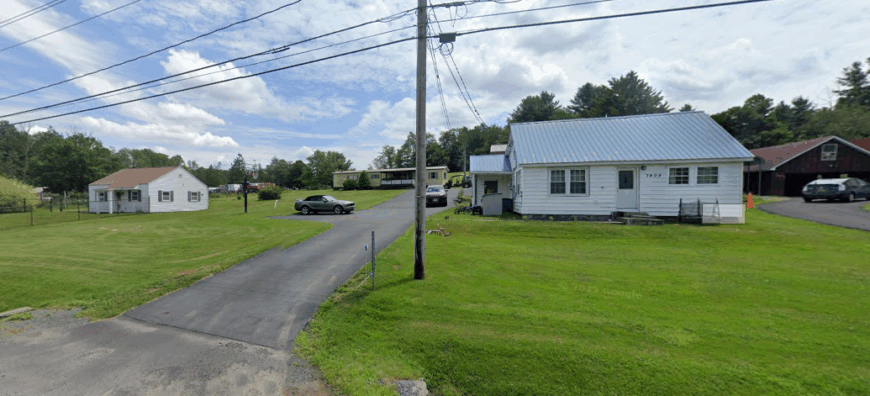
Neversink rests quietly in the western Catskills, cradled by forested hills and shadowed by the memory of villages lost beneath reservoir waters. Isolated not just by geography but by history, it feels like a town tucked behind a curtain of trees, where winding roads lead you through misty hollows and into stillness.
There’s a hush to the place, softened by the Neversink River’s gentle current and the deep woods that seem to close in protectively. You can fish the river that helped birth American fly fishing, hike the moss-covered trails of the Sundown Wild Forest, tracing paths once adjacent to villages now beneath the reservoir.
Local life flows slowly—anchored in forestry, quiet tourism, and a sense of reverence for the land and its past. There’s no hurry here, only the steady passing of seasons and stories. Neversink is the kind of place where silence holds meaning, and history lingers just beneath the surface—waiting to be heard.
Where is Neversink?
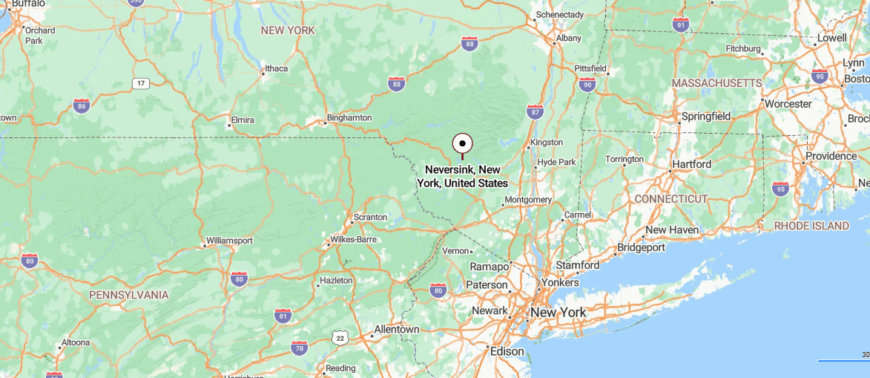
Neversink sits in the western Catskills of southeastern New York, in a quiet corner of Sullivan County. It’s about 40 miles west of Kingston, reached via NY-17 and winding backroads that pass forest and reservoir.
The drive leads past the Neversink River and into hills where the original village once stood, now beneath reservoir waters. With forest all around and history beneath your feet, Neversink feels quietly set apart.
24. Forestburgh: Solitude Among the Pines
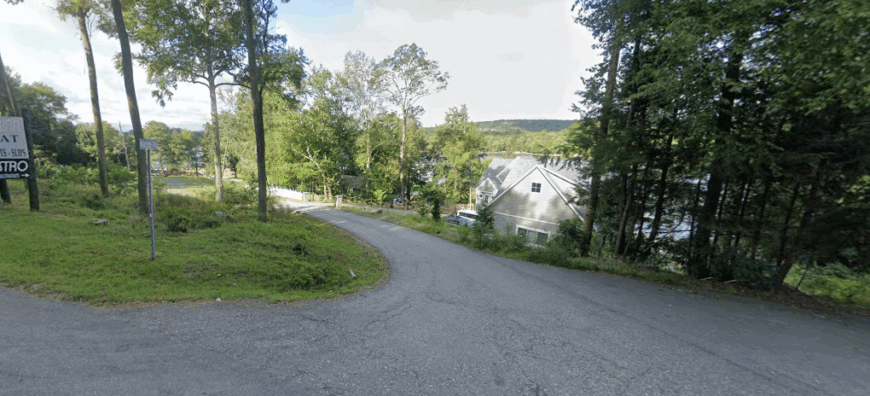
Forestburgh lies tucked within the wooded heart of Sullivan County, where dense forests, quiet roads, and scattered lakes give it the feeling of a place half-remembered, half-hidden. With no true town center and miles of trees in every direction, it feels far removed—even though it’s not far from Monticello.
Life here hums softly through summer cabins, forest trails, and the occasional call of a loon from the lake. You can paddle on Wolf Lake, catch a show at the Forestburgh Playhouse, or wander trails that wind through oak and pine like paths through time.
Some make a life here through arts, seasonal tourism, or simply by staying close to the land. There’s space to breathe, space to think—and space to disappear, if you choose. Forestburgh is the kind of place that wraps around you like shade on a hot day, and makes you want to stay just a little longer.
Where is Forestburgh?
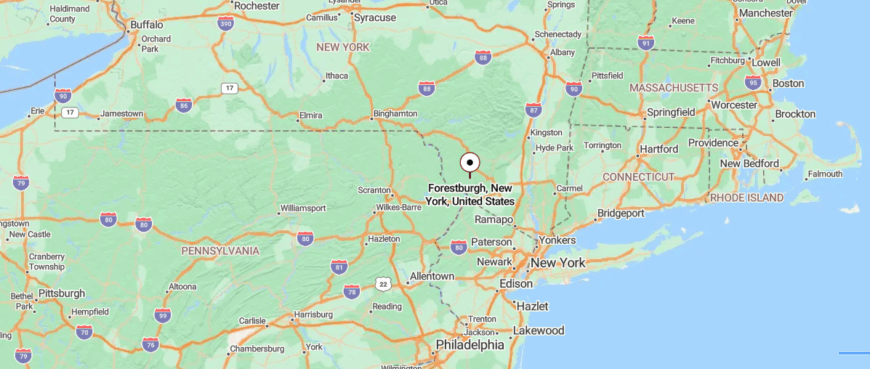
Forestburgh is tucked into the southern hills of Sullivan County, New York, where dense woods and winding roads define the landscape. It’s about 15 miles southwest of Monticello, reached by narrow county routes that curve through forest and farmland.
The drive slips beneath a canopy of trees, past quiet ponds and scattered cabins. With its wooded seclusion and hushed roads, Forestburgh feels like a place quietly folded into the forest, just far enough to feel untouched.
23. Barryville: Riverside Peace and Quiet
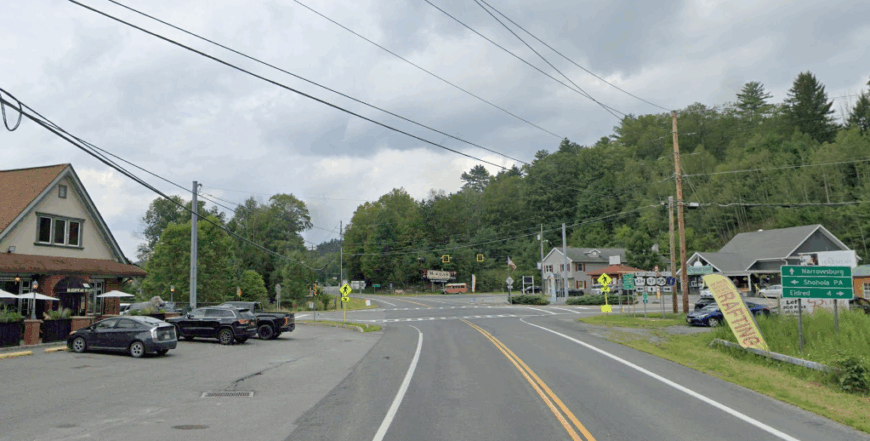
Barryville rests along a quiet bend of the Upper Delaware River, where forested hills rise gently behind weathered homes and the water glints like memory. Though only a short drive from more traveled towns, it feels tucked away—shielded by river bends, winding roads, and a pace that never hurries.
There’s a rustic charm here shaped by river life: you can kayak the Delaware, stroll the historic Roebling Aqueduct, or browse small shops and cafés that line the sleepy main road. Summer brings a quiet energy with farmers markets, live music, and fly fishers casting into still waters.
Many locals lean on tourism, small business, and creative work woven into rural days. Barryville isn’t flashy—it’s patient, rooted, and real. It’s the kind of place where the river carries your thoughts, and the stillness leaves a mark.
Where is Barryville?
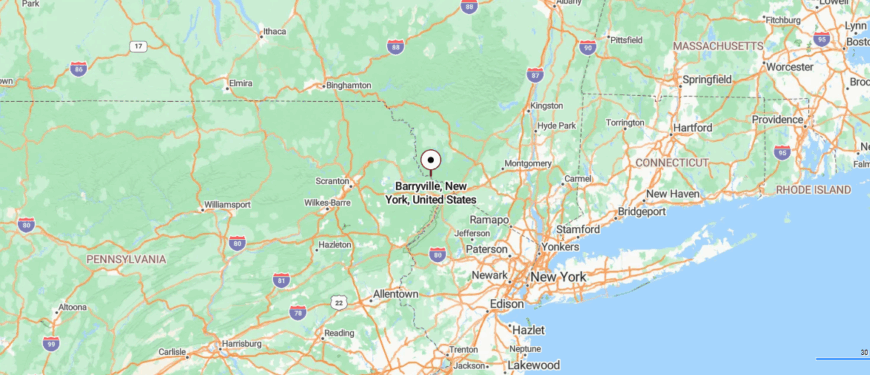
Barryville rests along the Upper Delaware River in southwestern Sullivan County, tucked into the forested borderlands between New York and Pennsylvania. It’s about 25 miles southwest of Monticello, reached by NY-97—a winding, scenic byway that hugs the river’s edge and dips through wooded hills.
The drive follows the water, with glimpses of eagles overhead and old stone walls trailing the roadside. Surrounded by river mist and forest hush, Barryville feels like a gentle bend in the world—still, green, and quietly set apart.
22. Narrowsburg: A Scenic Town on the Edge
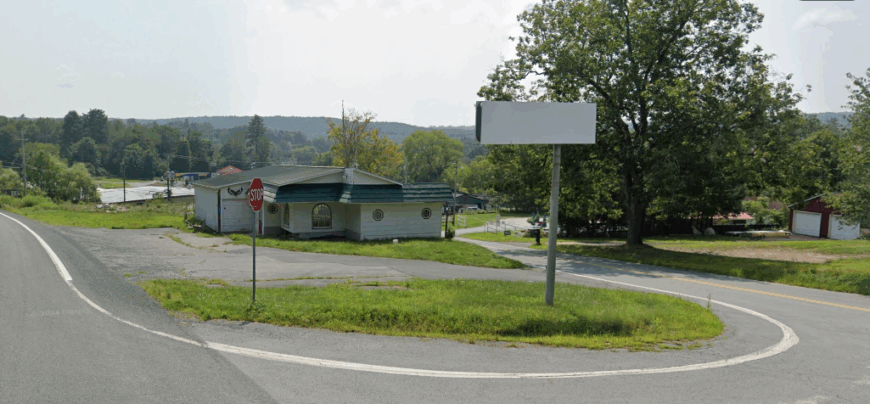
Perched above a wide curve in the Delaware River, Narrowsburg feels like a ridge between worlds—where art meets wilderness, and time moves just a little more gently. Though not far from highways, its setting on a river bluff and its tiny walkable center make it feel deeply self-contained.
You can browse indie galleries, sip coffee while overlooking the water, or hike the trails that trace the cliffs above the river. Eagles soar overhead, and the hum of the river is never far from earshot. A creative spirit runs through the town, with artists, chefs, and makers carving out a quiet life rooted in nature and community.
The economy leans on local business, weekend visitors, and the draw of simplicity done well. Narrowsburg is the kind of place that balances edge and ease—a soft landing with a wild view.
Where is Narrowsburg?

Narrowsburg is perched on a high bluff above the Delaware River in western Sullivan County, near the Pennsylvania border. It’s about 30 miles west of Monticello, reached by following NY-17B and NY-97 through rolling farmland and wooded river bends.
The road opens suddenly to views of cliffs and water, where the town rests above the river’s narrowest point. With its elevated perch and surrounding wilderness, Narrowsburg feels like a quiet lookout—close to the current, yet removed from its rush.
21. Kenoza Lake: Quiet by the Water
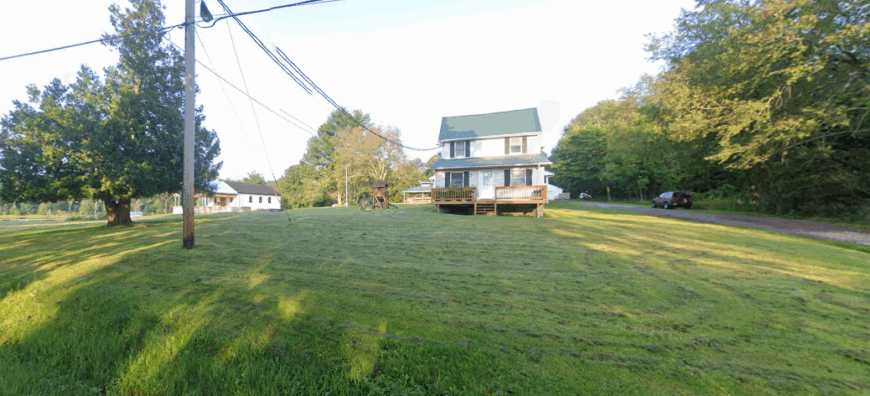
Kenoza Lake rests in a quiet pocket of Sullivan County, where still waters reflect wide skies and forested hills cradle the edge of town. With no main strip or rush of traffic, it feels more like a pause than a destination—a place where time slows to the rhythm of the lake itself.
You can paddle through early morning mist, walk country roads that pass aging barns and wildflower fields, or visit the historic stone chapel that watches silently over the shoreline. A few boutique inns and retreats draw in those seeking peace, but life here stays small, steady, and deeply local.
There’s a hush to the landscape, as if it’s always just finished telling a story. Kenoza Lake is the kind of place that lets the quiet do the talking—and invites you to listen.
Where is Kenoza Lake?
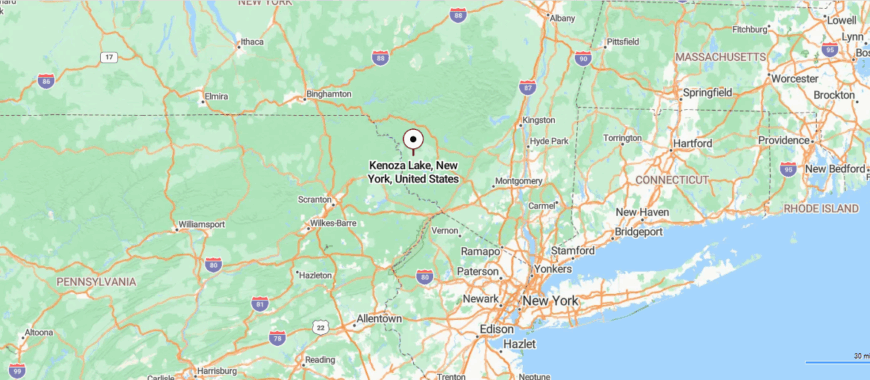
Kenoza Lake is nestled in the western hills of Sullivan County, New York, near the tranquil waters of its namesake lake. It’s about 15 miles northwest of Monticello, reached by winding county roads that pass open meadows, forest groves, and scattered farmhouses.
The journey feels unhurried, with the land gently rising and falling until the lake comes into view, still and surrounded by silence. Tucked away in rolling countryside, Kenoza Lake feels like a quiet pause between places—peaceful, reflective, and far from the rush of daily life.
20. Livingston Manor: A Hidden Mountain Town
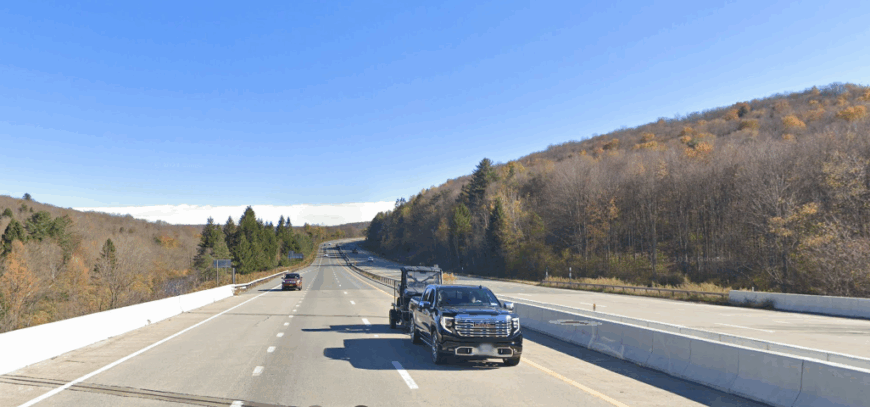
Livingston Manor nestles along the Willowemoc Creek, where fly lines arc through misty mornings and the mountains hold the town like a quiet promise. Though accessible by winding roads from the highway, it feels tucked into its own rhythm—part Catskills outpost, part creative hideaway.
You can fish legendary trout streams, hike the trails of Willowemoc Wild Forest, or wander Main Street with its blend of old-school storefronts, art spaces, and cafes. There’s a buzz here, gentle but steady, fed by weekenders, artists, and longtime locals alike.
Craft breweries, heritage food shops, and local makers keep the town humming without ever breaking the spell of its setting. The economy flows with tourism, craft, and a strong sense of place. Livingston Manor is the kind of place where inspiration comes slow and easy—like the river that runs right through it.
Where is Livingston Manor?
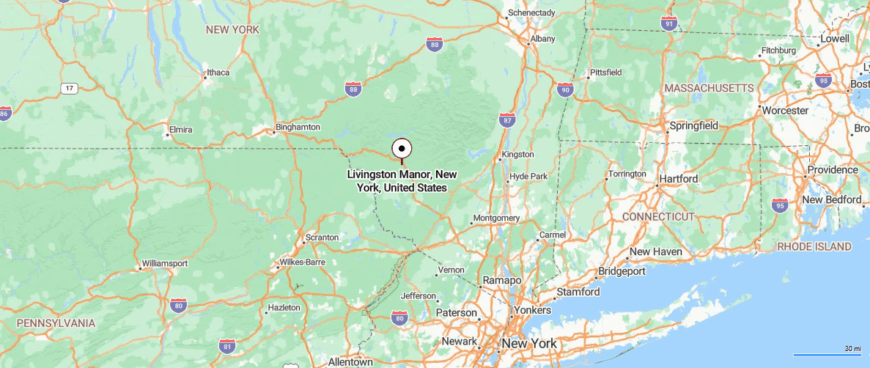
Livingston Manor is tucked in the northern Catskills of Sullivan County, New York, where wooded hills and trout streams shape the land. It’s about 30 miles northwest of Monticello, reached via NY-17 as it winds through valleys and past the Willowemoc Creek.
The drive flows gently into town, where old storefronts meet forest edges and the rhythm slows. Cradled by water and woods, Livingston Manor feels like a quiet crossroads between nature and time.
19. Hankins: Life Along the Delaware’s Curve
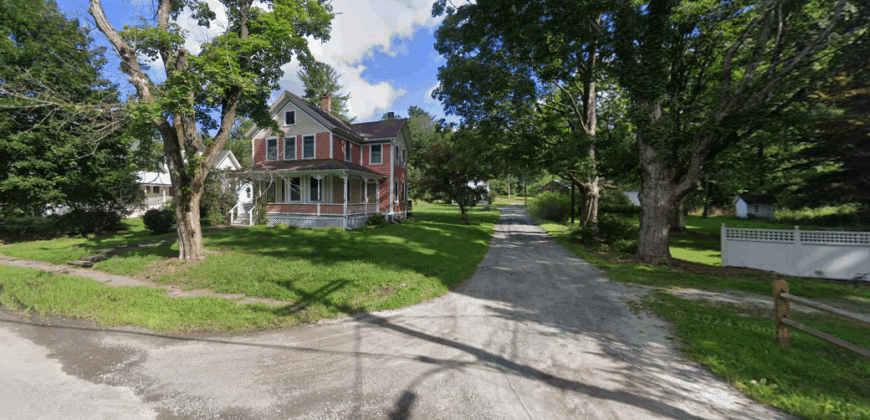
Hankins sits quietly along the Delaware River’s edge, where rolling hills meet open sky and the roads narrow into memory. It’s a hamlet without hurry—just a scattering of homes, barns, and river bends tucked far from the rhythms of busier towns.
The air smells of hay and water, and the landscape opens wide, offering silence as its own kind of welcome. You can fish the calm stretches of the Upper Delaware, wander dirt roads beneath maple canopies, or catch the golden light spilling across meadows at dusk.
Life here is rural and self-sustained, grounded in farming, forestry, and the steady work of living close to the land. There are no crowds, no signs pointing the way—only the quiet pull of space and time. Hankins is the kind of place that asks for nothing and gives you room to remember what matters.
Where is Hankins?
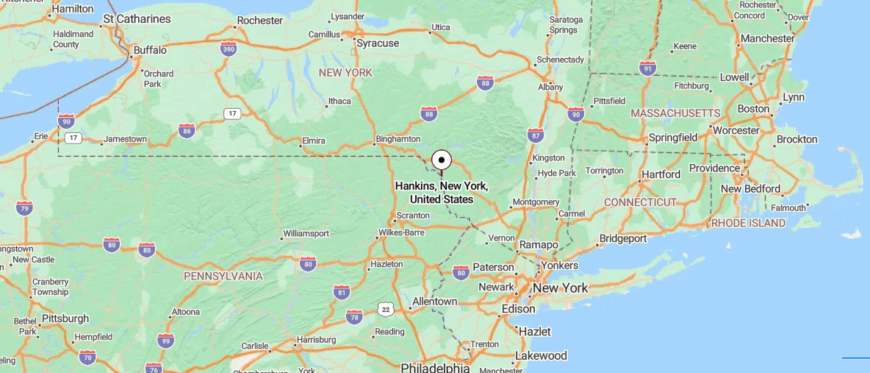
Hankins is nestled along the Delaware River in western Sullivan County, New York, near the edge of the Pennsylvania border. It’s about 20 miles west of Monticello, reached by NY-17B and backcountry roads that weave through forested hills and farmland.
The route hugs the river’s curve before arriving at this quiet hamlet tucked beneath tall trees and open sky. With its riverside calm and winding approach, Hankins feels like a gentle echo of the past—still, rooted, and softly remote.
18. Callicoon Center: Pastoral Calm and Rolling Hills
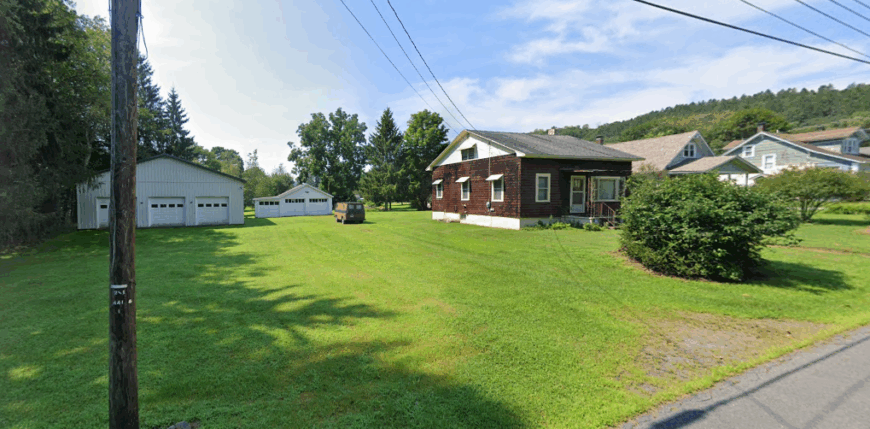
Callicoon Center is the kind of place that seems to unfold slowly, nestled in the green folds of Sullivan County where farms meet forest and time moves with intention. Set away from main roads and surrounded by hayfields, wooded ridges, and old barns leaning into the wind, it feels quietly held by the land.
There’s no town square or busy corner—just a scattering of houses, a historic church, and roads that seem to know their way by heart. You can drive past grazing cattle, catch a concert at the rustic Hill Country venue, or explore the backroads that wind through generations of farmland.
Life here leans rural and creative, with artists, homesteaders, and old families shaping their days close to nature. Callicoon Center doesn’t announce itself—it simply stays steady. It’s the kind of place where the quiet feels earned, and the view out your window becomes the day’s main event.
Where is Callicoon Center?
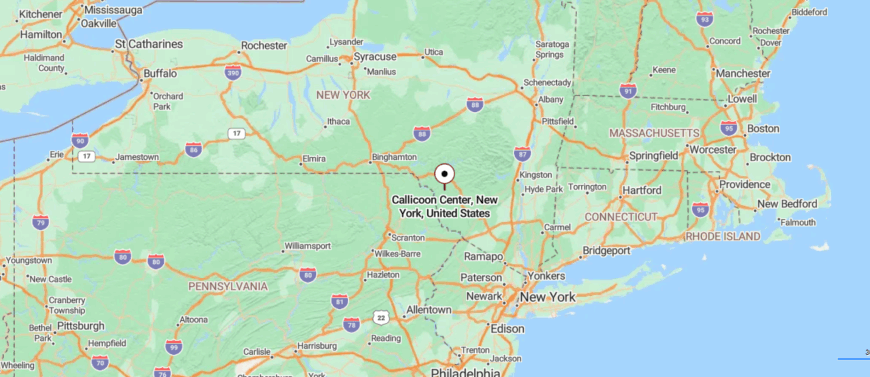
Callicoon Center is nestled in the western uplands of Sullivan County, New York, surrounded by rolling meadows, forested hills, and quiet farmland. It’s about 25 miles northwest of Monticello, reached by winding county roads that rise and dip through open fields and wooded ridgelines.
The drive feels timeless, with scattered barns and stone fences marking the way into this peaceful valley hamlet. Tucked far from the noise, Callicoon Center feels like a clearing in the hills—unhurried, open, and quietly held by the land.
17. Jeffersonville: Seclusion with a Hint of Vintage Charm
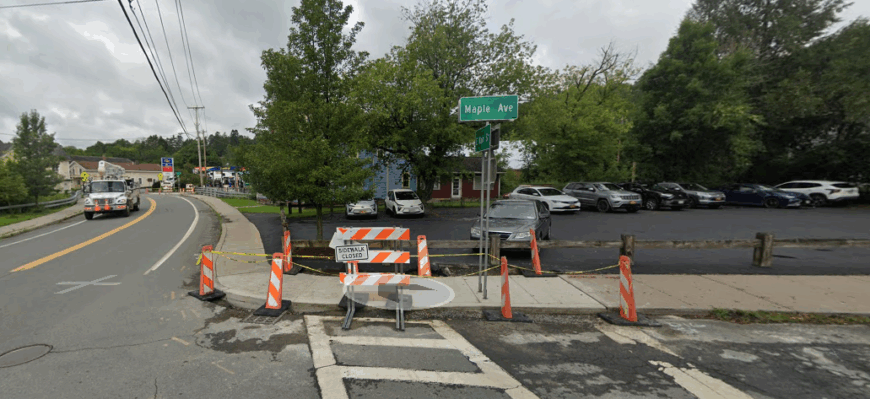
Jeffersonville sits in a gentle valley stitched together by creeks, meadows, and tidy porches, where small-town charm meets the hush of the western Catskills. Though more connected than some of its neighbors, it still feels like a place slightly set apart—where Main Street hums softly with local life and everything slows just a bit.
You can browse old-fashioned shops, grab a coffee from a corner café, or sit on a bench and listen to the breeze ripple through town. Festivals, antique fairs, and farmers markets bring a quiet rhythm to the seasons, while nearby trails and lakes offer pockets of peace just beyond the village.
Small businesses, agriculture, and creative trades keep the local heartbeat steady. Jeffersonville doesn’t hide—but it doesn’t rush, either. It’s the kind of place that welcomes you with a nod, then gives you space to settle into its calm.
Where is Jeffersonville?
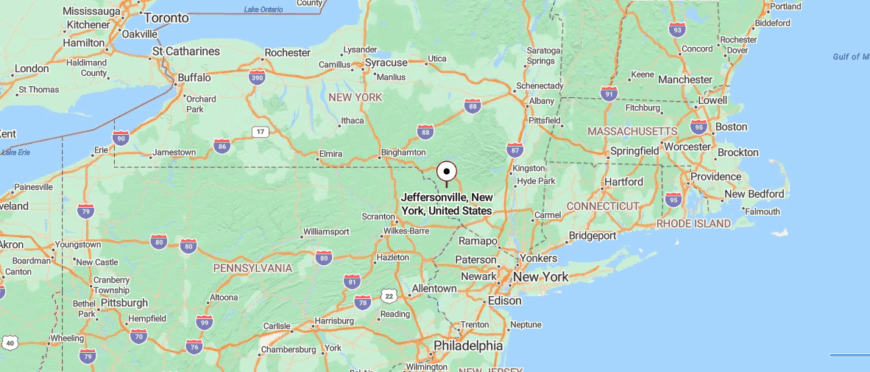
Jeffersonville is tucked into a broad valley in western Sullivan County, New York, where wooded hills cradle a small downtown lined with historic storefronts. It’s about 20 miles northwest of Monticello, reached by quiet country roads like NY-52 that wind past fields, creeks, and grazing farmland.
The approach is gentle and open, with the village appearing gradually as the hills give way. Surrounded by pasture and ridge, Jeffersonville feels close-knit and calm—just far enough to let the world slow down.
16. White Sulphur Springs: A Quiet Plateau in the Hills
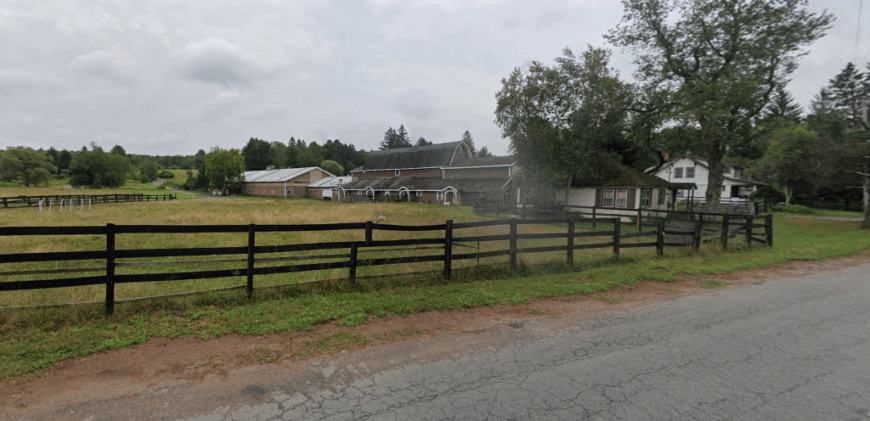
White Sulphur Springs rests gently in the highlands of Sullivan County, where open pastures meet forest edges and the sky feels just a little bigger. Once known for its mineral springs and boarding houses, the village now hums with a quieter rhythm—less about escape, more about return.
It’s not flashy or crowded, just a scattering of homes, fields, and winding roads softened by time. You can fish in nearby lakes, hike through local woods, or catch the golden hour spilling across the hills like a whispered memory.
Life here is shaped by farming, small trades, and those drawn to the steady quiet of rural days. The past lingers in old structures and slow stories, but the present is peaceful and unforced. White Sulphur Springs is the kind of place that doesn’t ask for attention—it simply offers space to breathe.
Where is White Sulphur Springs?
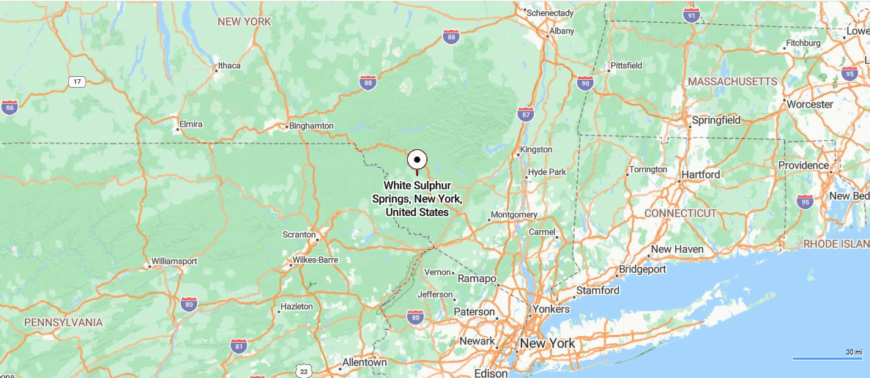
White Sulphur Springs is nestled in the rolling countryside of western Sullivan County, New York, surrounded by meadows, forest, and quiet backroads. It’s about 15 miles northwest of Monticello, reached via NY-52 and local lanes that meander past old farms and wooded hills.
The journey is calm and steady, with the town appearing as a soft rise in the land where fields meet forest. With its gentle seclusion and deep-rooted quiet, White Sulphur Springs feels like a pause between hills—unassuming, restful, and tucked just far enough away.
15. Bethel: Scenic Peace with a Hint of History
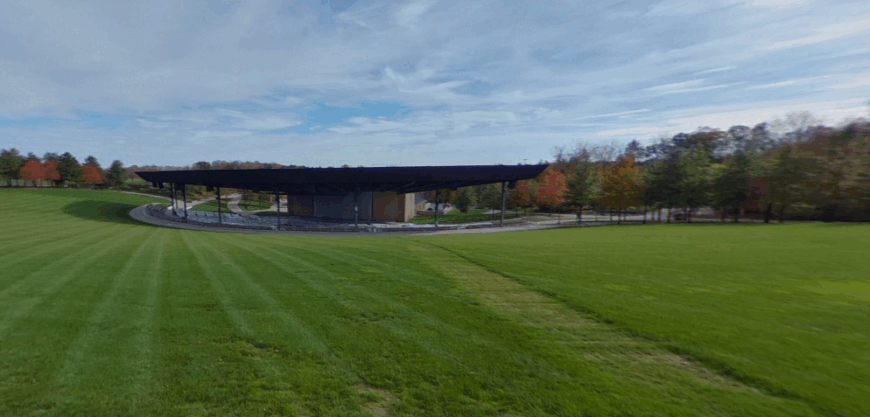
Bethel holds its place gently in the western Catskills, where wide fields roll into quiet forests and echoes of the past still hum through the hills. Though it’s best known as the site of the 1969 Woodstock Festival, the town today feels calm and grounded—more meadows and mist than music and crowds.
You can visit the Bethel Woods Center for the Arts, walk trails through the old festival grounds, or explore local farm stands and backroads that drift through untouched countryside. There’s a sense of open sky and open time here, where life moves with the land and the seasons.
Small businesses, arts, and heritage tourism shape the local rhythm, but nothing feels rushed. Bethel doesn’t live in nostalgia—it lives in the present, quiet and steady. It’s the kind of place where history lingers softly, and the landscape invites you to stay awhile.
Where is Bethel?
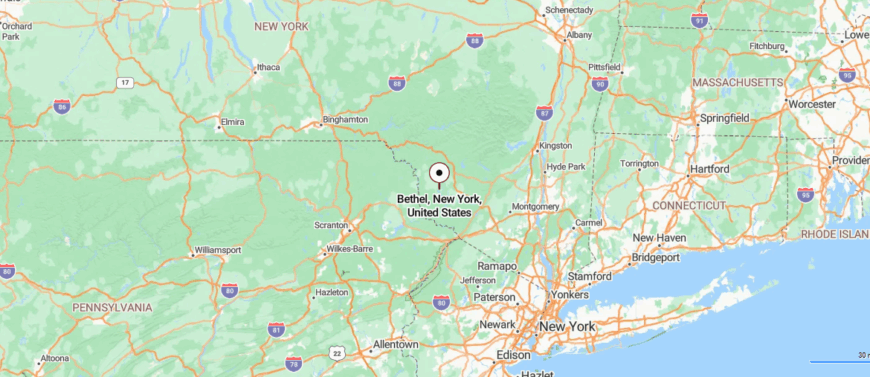
Bethel is set in the heart of western Sullivan County, New York, where wooded hills and open fields stretch beneath wide Catskills skies. It’s about 10 miles west of Monticello, easily reached via NY-17B, a quiet road that rolls past lakes, farmland, and the historic site of the 1969 Woodstock Festival.
The landscape opens gradually, revealing peaceful homesteads and winding country lanes. Surrounded by music history and natural calm, Bethel feels both grounded and expansive—close to memory, yet gently apart from time.
14. Roscoe: A Fly-Fishing Hideaway
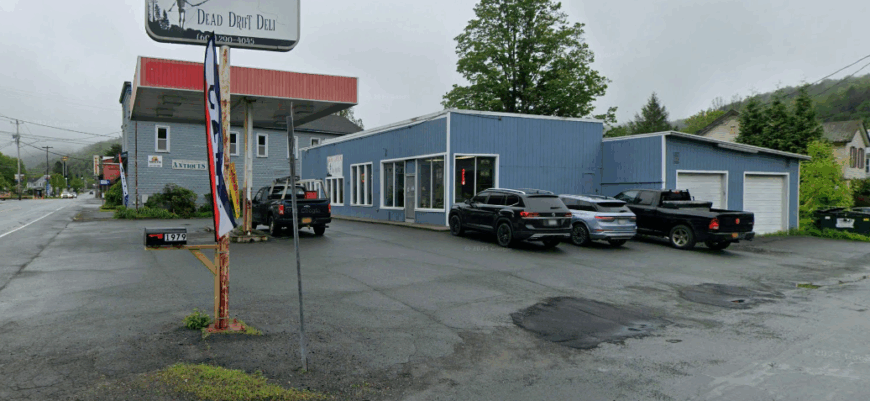
Roscoe sits at the meeting point of rivers and ridges, where the Beaverkill and Willowemoc come together like old friends in no hurry to part. Known as “Trout Town, USA,” it’s nestled deep in the western Catskills, far from city noise and wrapped in the hush of forest and water.
The town feels sturdy and timeworn—log cabins, fly shops, and diners where everyone knows your name. You can cast a line into legendary streams, hike mossy trails through nearby state forests, or browse local shops filled with rods, reels, and stories.
Tourism and outdoor life shape much of the economy, but it’s the rhythm of the rivers that truly defines the place. Life moves at the pace of the current—steady, unforced, and quietly enduring. Roscoe is the kind of place where you come to catch something—but often leave having found something else entirely.
Where is Roscoe?
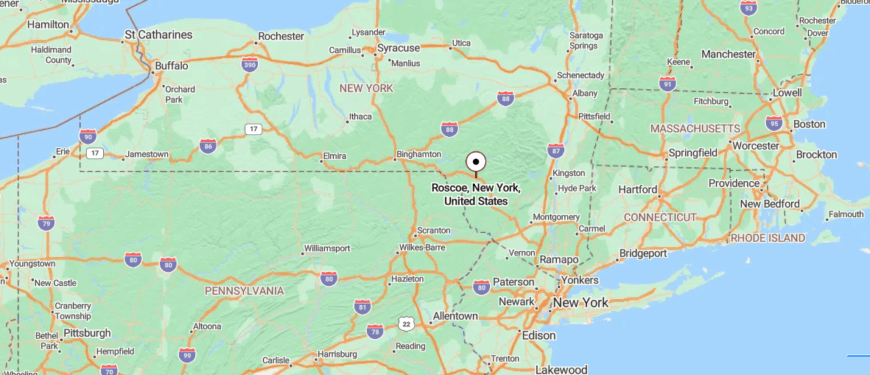
Roscoe is tucked into the western edge of Sullivan County, New York, where the Beaverkill and Willowemoc rivers meet beneath the shadow of the Catskill Mountains. It’s about 35 miles northwest of Monticello, reached via NY-17 as it curves through forested valleys and alongside legendary trout streams.
The road leads into a small hamlet framed by water, hills, and the quiet rhythm of fishing life. Surrounded by flowing rivers and wooded slopes, Roscoe feels like a pocket of calm—a place where the world narrows to water, stone, and stillness.
13. Wurtsboro: A Quiet Gateway to the Mountains
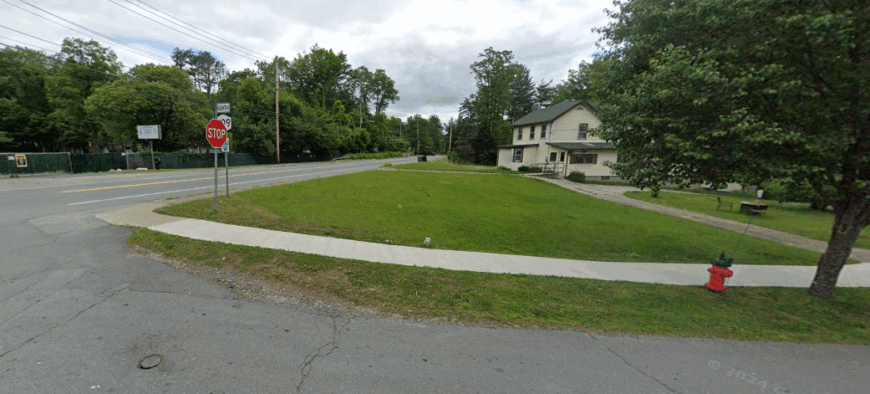
Wurtsboro sits at the edge of the Shawangunk Ridge, where the Catskills begin to rise and the valleys stretch out wide beneath soft sky. Though close to Route 17, the village feels tucked into its own pace—just far enough from the rush to breathe, just near enough to feel connected.
Its old brick storefronts line a quiet main street, echoing a time when trains brought travelers seeking fresh air and healing springs. You can hike the D&H Canal trail, birdwatch in the Basha Kill wetlands, or browse antique shops with creaky floors and long stories.
Local life blends small business, nature tourism, and a deep sense of homegrown calm. Wurtsboro doesn’t ask for attention—it offers presence. It’s the kind of place where the past lingers gently, and the landscape invites you to slow down and stay awhile.
Where is Wurtsboro?
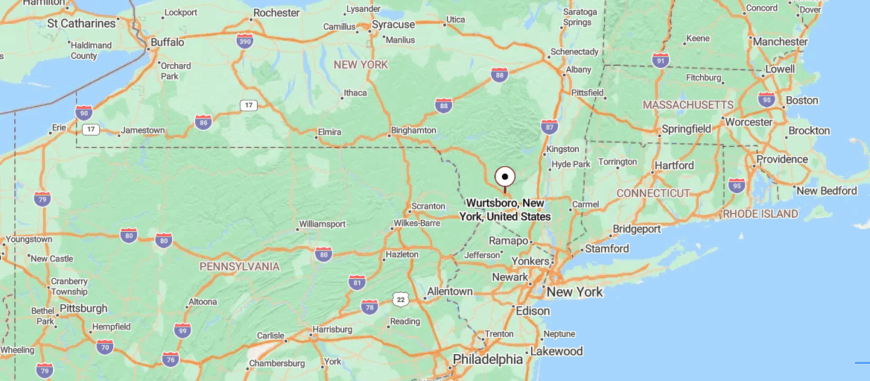
Wurtsboro sits in the southeastern corner of Sullivan County, New York, where the Shawangunk Ridge meets the edge of the Catskills. It’s about 20 miles southeast of Monticello, easily reached via NY-17 as it curves through forested hills and old rail corridors.
The road opens into a small village framed by mountains, wetlands, and quiet stretches of the Basha Kill. With its mix of ridge, river, and stillness, Wurtsboro feels like a quiet threshold—close to the main road, yet brushed with the hush of wild land.
12. Rockland: A Wide Wilderness Town
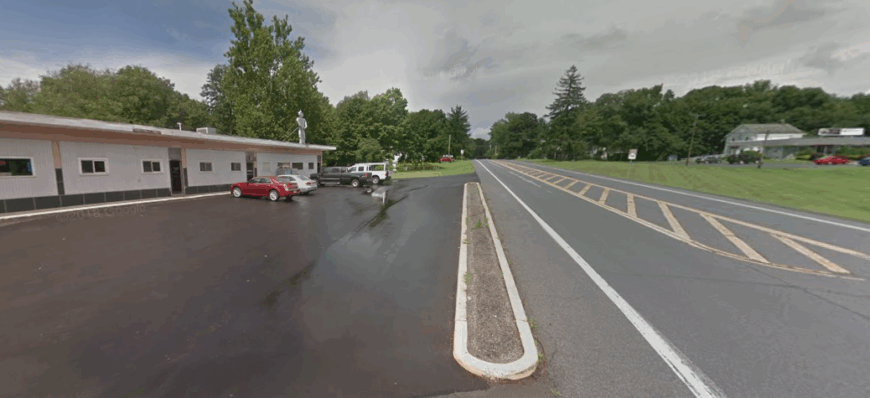
Rockland drifts quietly in the western Catskills, spread across forested hills and river valleys where time feels slower and the land speaks first. It’s not a single village but a stretch of hamlets—Roscoe, Livingston Manor, and a handful of others—threaded together by creeks, pines, and generations of stories.
The stillness here runs deep, broken only by the rush of the Beaverkill or the creak of an old barn settling into its roots. You can fish world-famous trout streams, wander woodland trails, or drive backroads that dip through meadows and rise into mist.
Life leans rural and self-reliant, shaped by outdoor tourism, family farms, and a deep reverence for the land. Rockland doesn’t seek attention—it’s content to keep its quiet corners. It’s the kind of place where you feel far from everything, yet somehow exactly where you’re supposed to be.
Where is Rockland?

Rockland is tucked into the northwest corner of Sullivan County, New York, where the Catskill Mountains rise around winding rivers and quiet forest roads. It’s about 35 miles from Monticello, reached via NY-17 and smaller routes that follow the curves of the Beaverkill and Willowemoc.
The drive narrows into shaded valleys, where old stone bridges and thick woods guide the way. With its deep hollows and river-fed calm, Rockland feels like a place carved gently into the mountains—still, green, and far from the rush.
11. Tennanah Lake: Forest Homes by the Water

Tennanah Lake rests high on a wooded ridge in Sullivan County, where the air turns cool even in summer and the world feels far below. Tucked away beyond winding roads and dense forest, the lake glimmers like a secret—quiet, still, and known mostly to those who return year after year.
There’s no town center here, just a scattering of cabins, a golf course, and the gentle lap of water against shore. You can fish in the calm, paddle under soft morning light, or listen to loons echo across the hills as dusk settles in. Life here is seasonal and serene, shaped by weekenders, retirees, and those who value the kind of peace you can’t buy.
It’s a place without pretense or pace—only sky, trees, and time. Tennanah Lake is the kind of place that lives in memory as much as on the map—a quiet breath you don’t realize you needed.
Where is Tennanah Lake?

Tennanah Lake is nestled in the highlands of northwestern Sullivan County, New York, surrounded by forested ridges and peaceful glacial waters. It’s about 40 miles northwest of Monticello, reached by quiet country roads that wind past meadows, woodland cabins, and hidden streams.
The journey climbs gradually until the lake appears, still and tucked among trees, with little else in sight. Remote and reflective, Tennanah Lake feels like a quiet perch above the world—serene, elevated, and far from the noise below.
10. Glen Spey: A Woodland Retreat

Glen Spey is a small hamlet with a population of just over 1,500, and it’s truly one of my favorite woodland escapes in Southern New York. Located in the town of Lumberland, this area is enveloped by dense forests and undisturbed land, offering residents spacious properties that are few and far between.
I love hiking through the expansive forest trails here and enjoying the peaceful environment that’s far removed from city life. The main industries are minimal, focusing mostly on local services and small businesses, which adds to the secluded charm.
What makes Glen Spey so secluded is its vast stretches of woodland and the absence of commercial development, allowing nature to take the lead.
Where is Glen Spey?

Nestled in Sullivan County, Glen Spey sits close to the Delaware River, right on the border between New York and Pennsylvania. Its location is quite remote, with miles of forested terrain surrounding it, making it a peaceful haven away from bustling towns.
Getting there involves traversing winding country roads, which are beautiful but not heavily trafficked, enhancing the sense of seclusion. Personally, I find that the journey to Glen Spey is part of its charm, as the scenic drive through the woodland sets the tone for a relaxing retreat.
9. Eldred: Seclusion Near Highland Lakes

Eldred is a quaint hamlet with a population hovering around 800, offering a secluded lifestyle that I find truly refreshing. It’s surrounded by extensive woodland areas and dotted with beautiful lakes like Highland Lake, which is perfect for fishing and kayaking.
When I’m in Eldred, I enjoy the outdoor activities the area offers, such as hiking and exploring the local wildlife. The town’s economy is modest, with small businesses and local artisans contributing to its charm.
Large lot sizes averaging over an acre provide residents with plenty of space and privacy, and the lack of commercial and high-traffic regions makes Eldred a perfect escape from urban noise.
Where is Eldred?

Situated in the southwestern part of Sullivan County, Eldred is tucked away near the Pennsylvania border. This location contributes to its seclusion, as it’s nestled between forests and lakes, far from major highways.
Accessing Eldred typically involves taking country roads that weave through the scenic landscape, which is a journey I always look forward to. The town’s distance from larger urban centers means fewer visitors and a tight-knit community where everyone appreciates the tranquility of their surroundings.
8. Fremont Center: Embraced by Nature’s Silence

With a population of just about 300, Fremont Center is one of those places where I feel completely at peace. This hamlet is characterized by vast open spaces and a low resident count, surrounded by rolling hills and lush meadows.
There’s not much in terms of industry here, which is exactly part of its appeal—the quiet is almost tangible. I often spend time here just enjoying the silence, interrupted only by the sounds of nature.
The expansive natural landscapes offer a private haven for those who, like me, appreciate a life removed from the hustle and bustle.
Where is Fremont Center?

Located in Sullivan County, Fremont Center lies north of the Delaware River, not far from the Catskill Mountains. Its remote location is accentuated by the surrounding farmland and forests, making it feel worlds away from city life.
Getting there means navigating through country roads that wind through picturesque scenery. I find that the journey adds to the sense of adventure, leading me to a place where nature’s silence is all-encompassing and deeply restorative.
7. Cochecton Center: Tranquility in the Countryside

Cochecton Center, with its population of around 150, is a tiny hamlet that offers profound tranquility in the countryside. The large properties here are surrounded by natural barriers like forests and hills, providing a sense of seclusion that I thoroughly enjoy.
There aren’t any major industries, just small family-run farms and local businesses that give the area its rustic charm. One of my favorite activities is exploring the rural roads by bike, taking in the peaceful scenery.
The town is miles away from major towns and highways, which means it’s rarely frequented by tourists, preserving its serene atmosphere.
Where is Cochecton Center?

Sitting in western Sullivan County, Cochecton Center is nestled close to the Pennsylvania border, in a region characterized by rolling hills and agricultural land. Its out-of-the-way location enhances its seclusion, as it’s not on the path to any major destinations.
Reaching Cochecton Center involves a leisurely drive through scenic countryside, which I always find to be part of its allure. The town’s isolation provides a quiet retreat where one can disconnect from the fast pace of modern life.
6. Parksville: Quiet Living Off the Main Trail

Parksville is a small hamlet with a population of approximately 700, and it offers quiet living that feels a world away from urban centers. The low housing density and substantial undeveloped land contribute to a peaceful setting that I find incredibly relaxing.
There are few industries here, primarily small local businesses and a touch of tourism owing to its proximity to the Catskills. One of the hidden gems in Parksville is the Parksville Rail Trail, a scenic path perfect for walking and cycling.
The absence of commercial districts and its location off the main trails make Parksville a haven for those seeking serenity.
Where is Parksville?

Parksville is located in Liberty, Sullivan County, nestled amidst the Catskill Mountains. It’s situated just off Route 17, but despite this proximity, it maintains a quiet ambiance because it’s bypassed by the newer highway sections.
To get there, I often take the old roads that lead directly into the village, offering glimpses of the area’s charming landscapes. Parksville’s removal from urban bustle and its hidden positioning among the hills give it a secluded feel that’s hard to find elsewhere.
5. Hortonville: A Peaceful Riverside Village

Hortonville is a quaint village with a population of around 200, located along the Delaware River. It’s one of those places where I can sit by the riverside for hours, enjoying the tranquility.
The minimal population and expansive lot sizes contribute to a secluded environment away from tourist paths. The main industries are limited, with some local agriculture and small businesses.
Activities here revolve around nature—fishing, canoeing, and riverside walks are some of my favorite pastimes in Hortonville. Its peaceful riverside setting makes it an ideal spot for those yearning for a quiet escape.
Where is Hortonville?

Situated in the town of Delaware, Sullivan County, Hortonville rests on the northern bank of the Delaware River. Its location along the river adds to its charm but also to its seclusion, as it’s not on any major travel routes.
Accessing Hortonville involves taking local roads that meander through the countryside, which I always find to be a serene journey. The village’s distance from bustling towns and the enveloping natural landscape enhance its secluded atmosphere, making it a true riverside retreat.
4. DeBruce: Hidden Amongst the Hills

DeBruce is a small hamlet with a population of fewer than 100 people, which to me feels like a hidden treasure tucked away in the hills. Surrounded by rolling hills and dense forests, it offers residents large acreages and a lifestyle removed from high-traffic areas.
The primary industry here is centered around outdoor recreation and tourism, thanks to the renowned fly-fishing opportunities on the Willowemoc Creek. I’ve always enjoyed the tranquility and the opportunity to reconnect with nature here.
DeBruce’s lack of commercial zones and limited development keeps it truly secluded.
Where is DeBruce?

Located within the town of Rockland in Sullivan County, DeBruce sits near the heart of the Catskill Park. Its hidden location amongst the hills and forests means it’s off the beaten path, contributing to its peacefulness.
To reach DeBruce, I typically take winding mountain roads that offer stunning views of the surrounding landscape. The area’s seclusion is further enhanced by the natural barriers, making it a perfect spot for those seeking solitude in nature.
3. Lew Beach: Escape to Untouched Wilderness

Lew Beach is a tiny hamlet with a population of roughly 200 people, and it’s one of my go-to spots when I crave untouched wilderness.
The area boasts vast undeveloped lands and expansive forested areas, ensuring privacy and a close connection to nature for its residents. There isn’t much in terms of industry, aside from some local lodging and outdoor recreation services catering to anglers and hikers.
I particularly love fishing in the Beaver Kill River, which flows nearby and is famous among fly-fishing enthusiasts. The sizable lots and the surrounding wilderness make Lew Beach a perfect secluded retreat.
Where is Lew Beach?

Nestled in the town of Rockland in Sullivan County, Lew Beach is located near the western edge of the Catskill Mountains. Its remote setting, away from major highways and towns, contributes to its sense of isolation.
Getting there involves a scenic drive through mountain roads, which I always find to be a peaceful start to my visit. The hamlet’s location amidst vast wilderness areas ensures that it remains a quiet haven, ideal for those seeking to escape into nature.
2. Willowemoc: Serenity Along the Creek

Willowemoc is a small community with an estimated population of 150, offering serenity along the Willowemoc Creek. I find this area incredibly peaceful, with sprawling landscapes and low housing density that make it feel miles away from anywhere.
The main attraction here is the creek itself, renowned for its excellent fly-fishing opportunities. There are few industries, with local inns and guide services supporting the outdoor activities.
The town’s location along the tranquil creek and far from bustling urban centers provides a secluded environment that’s perfect for nature lovers like me.
Where is Willowemoc?

Situated in Sullivan County, Willowemoc lies east of Lew Beach and is nestled within the Catskill Park. Its seclusion is due to the enveloping forests and the lack of major roads passing through the area.
To reach Willowemoc, I often drive through scenic routes that hug the creek, offering picturesque views at every turn. The small community’s remote location ensures that it remains a tranquil spot, ideal for those who appreciate the quiet beauty of nature.
1. Claryville: A Remote Haven in the Catskills

Claryville, with a population of approximately 400, is a remote haven deep in the Catskill Mountains. This is one of the most secluded places I’ve found in Southern New York, with large acre properties and natural surroundings that provide a serene and private living experience.
The main industries are limited to outdoor recreation, with camps and retreats taking advantage of the area’s natural beauty. I enjoy hiking the nearby trails, including those in the Slide Mountain Wilderness, and visiting the Claryville Pottery studio, a hidden gem showcasing local artistry.
What makes Claryville truly secluded is its sparse population and the vast stretches of untouched wilderness that surround it.
Where is Claryville?

Located at the border of Sullivan and Ulster counties, Claryville is nestled at the foot of the Catskill High Peaks. Its location deep within the Catskills contributes to its remoteness, with few roads leading into the hamlet.
Getting to Claryville often involves navigating through winding mountain roads that are both challenging and breathtaking. The town’s distance from major highways and urban centers enhances its seclusion. For me, the journey is rewarded by the peace and natural beauty that Claryville offers, making it a truly remote haven.






